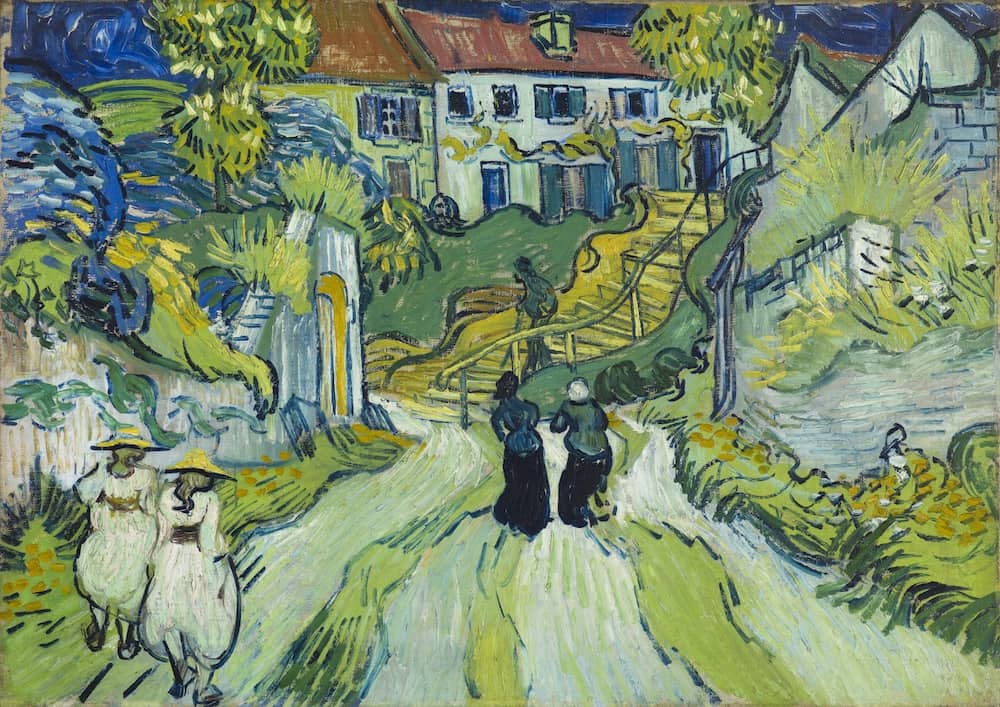Stairway at Auvers, 1890 by Vincent van Gogh

In its broad symmetry, pairings, recurrent arabesques, and wavy, ribboned patterning, this is one of Van Gogh's pictures closest to ornament and the popular decorative taste of the 1890s, the so-called Art Nouveau. It recalls this art too by its flatness, reduced substance and general lightness of color. Compared to other paintings by Van Gogh, this has a tinted quality because of the amount of white and dilute tones of yellow, green, and blue. A scene of many convergences and encounters, focused upon a central region at the foot of the steps, it has no real dominant; the general effect is governed by the hectic movement of unsteady diagonal lines imposed upon objects of unlike character.
The repetition of the restless theme here is so impulsive, however, and contains so many interesting variations, that the painting soon loses that aspect of ornament and becomes a work of intense passion and concentrated seeing. We discover contrasting straight lines in the buildings, stabilizing horizontals and verticals, the important red roofs, and numerous touches like the yellow hats, the yellow doorway, and the dark windows (which recall the women's skirts) - deliberate oppositions to the prevailing instability, yet not altogether opposed to it in their own spottedness. The undulating forms too have their individual character.
Between the house and the steps, they define a long, coiling triangular shape that reminds us of the cypress and the road in a previous work of an ecstatic, visionary quality (frontispiece). Here, as in earlier paintings, Van Gogh practices that exchange of tones between far separated parts of the space (and between neighboring objects in different planes), which is one of his most effective unifying means. The same white tones with notes of blue and green occur in the distant house, in the dresses of the two girls in the foreground, and in the road and wall they connect. In all this excitement of lines and spots there is also a note of buoyant gaiety and delight.




















